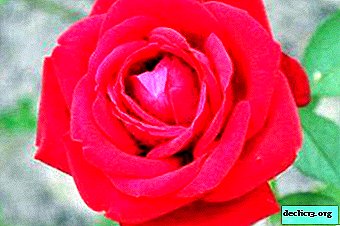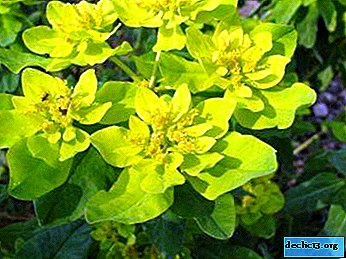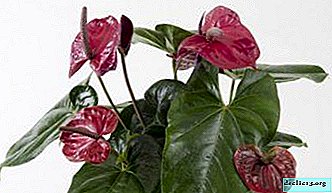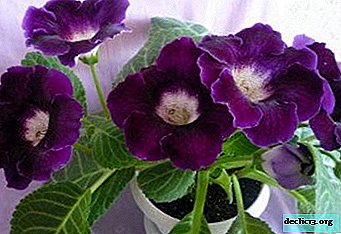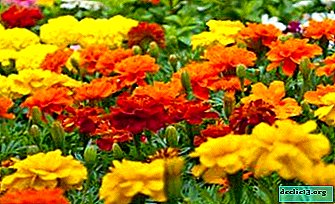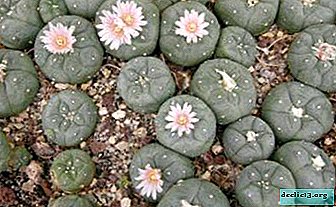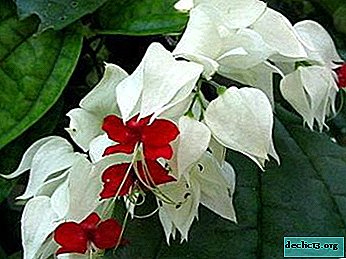Care for home gerberas in pots and methods of resuscitation of plants
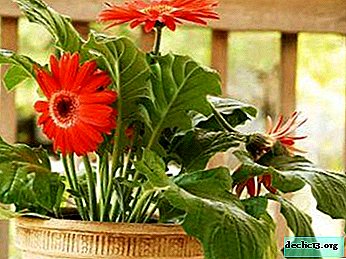
Gerbera is an unpretentious flower of bright colors. Often this plant is grown in greenhouses to create bouquets, and also grows on flower beds as a garden plant.
Nevertheless, this flower also feels great in a pot, in a living room. Gerbera is distinguished by an increased ability to reproduce itself and easy adaptation to new conditions.
The price of a plant starts at 300 rubles and reaches the mark of 2000 rubles.
Description
Gerbera is a herbaceous perennial from the Astra family. Also called transvaal daisy. Wild representatives of this plant species grow in:
- Of Asia.
- South Africa.
- On the island of Madagascar.
Gerbera leaves are large, light green in color, grow on short stems collected in a rosette. Peduncles are located on separate powerful stems and give one flower each. Flowers in diameter reach 5-12 cm, depending on the variety. They look like chamomile flowers. The color is bright, all kinds of shades of yellow, red and pink.
Photo
Photos of gerberas can be found in more detail here.





Temperature mode
Unlike relatives grown in the garden, potted gerbera can bloom for several years, provided that she will be provided with the correct period of rest (about when and how many gerberas bloom and why they do not, read here, and from this article you will learn about the features of growing and caring for a room flower). After flowering, approximately in early November, a pot of gerbera is transferred to a shaded cool room, whose temperature is 16-18 degrees.
Attention! Cooling should not be allowed below 12 degrees, this can lead to severe hypothermia of the flower.Watering is gradually reduced, keeping the soil slightly moist. From mid-February, the gerbera is returned to normal conditions.
Choosing a place in the house
Gerbera refers to photophilous plants. The intensity and duration of flowering directly depend on proper lighting. of this plant. It is best to place the pot in a place where the flower will be provided with bright diffused light. Avoid direct sunlight, especially in the summer.
It is equally important to provide the gerbera with fresh air - the room must be regularly ventilated, and in warm weather you can move the flower to a balcony or veranda.
Watering and spraying rules
The soil in the pot should be kept in a moderately moist state. Excess moisture for gerbera is no less dangerous than a lack. Water for irrigation pre-sedimented for at least a day, and its temperature should be approximately 20 degrees. Watering is carried out along the edge of the pot or through the pan.
 After 30 minutes, the remaining water from the pan must be drained to avoid stagnation of moisture. In no case should water be allowed to enter the outlet of the leaves, this can cause flower diseases. It is also important to ensure that the gerbera roots do not come into contact with the water in the pan. For additional hydration, daily spraying of the area around the plant can be carried out.
After 30 minutes, the remaining water from the pan must be drained to avoid stagnation of moisture. In no case should water be allowed to enter the outlet of the leaves, this can cause flower diseases. It is also important to ensure that the gerbera roots do not come into contact with the water in the pan. For additional hydration, daily spraying of the area around the plant can be carried out.
Himself it is not recommended to spray the flower to prevent drops from falling on the leaves of the plant. For the same purpose, you can use a special humidifier or place trays with moss and wet pebbles nearby.
Pruning and pinching
Gerbera pruning and leaf shaping are usually carried out only for garden representatives. Home specimens do not need this procedure, it is enough to care for the soil.
Reference. Wilted flowers and leaves are broken out together with the stem at the base. Cutting flowers with a knife is not recommended.How to care for the soil?
The soil in the pot should have a weak acidity. It is recommended to use a substrate prepared from two parts of leafy soil, one part of peat and one part of sand. Young, actively growing flowers need an annual transplant. The diameter of the new pot should be 2-3 cm larger than the previous one.
It is not recommended to transplant a gerbera into an oversized pot, in this case, the plant may not bloom for a long time. Transplantation during flowering is highly contraindicated. Even if the plant was bought in a store, it is better to wait until the flowering and the dormant period.
Gerbera contraindicated fertilizer compost and humus. During the stage of growth and accumulation of green mass, complex feeding with a high nitrogen content is recommended. Some gardeners use a weaker solution than indicated on the package, because excess fertilizer is harmful to the flower. During flowering, the gerbera is fed with potash fertilizers, the concentration of which should also be minimal.
Diseases and Pests
In general, indoor gerbera is quite resistant to diseases and pests, however, disturbances in care can provoke the appearance of some problems:
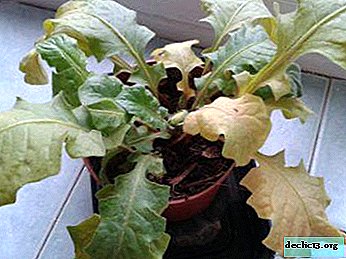 Withering and yellowing of leaves usually a sign of the appearance of a spider mite. This pest appears in rooms with excessively dry air.
Withering and yellowing of leaves usually a sign of the appearance of a spider mite. This pest appears in rooms with excessively dry air.Plants with overdried soil may also be attacked. To combat, the gerbera is treated with a soap solution or insecticides, for example, Fitoverm.
- White plaque on leaves indicates the defeat of the flower with powdery mildew. This ailment occurs as a result of a sharp temperature drop in the room, watering with too cold water or due to an excess of nitrogen in the soil.
The affected plant must be isolated from other flowers and immediately clean healthy leaves from plaque, and wilted - removed.
On a note. The flower is treated with a solution of potassium permanganate or vitriol for a week. - Leaf drying occurs with fusarium. For treatment, use a weak solution of manganese, which watered the flower, avoiding contact with the leaves. Thanks to this, the soil is disinfected.
- Leaf stretching indicates a lack of light, but may also be a sign of acclimatization. If the flower has long been growing indoors, it is necessary to provide it with an additional light source. If the gerbera is acquired recently, no special measures are required, you just need to let the flower adapt to new conditions.
- Wilting, stunting observed in violation of the irrigation regime. If the earth in the pot is overdried, it is necessary to establish regular watering. If the soil is excessively waterlogged, it is necessary to immediately remove the flower with an earthen lump and place it in several layers of newspaper. If necessary, change newspapers 2-3 times. The paper will absorb excess water and help prevent fungus or rot.
Read more about the diseases and pests of indoor gerbera, as well as methods of dealing with them, read here.
Is it possible to reanimate a dying plant?
In the event that the gerbera is severely affected by the disease or pests, and even after treatment is in a deplorable state, an emergency transplant into fresh healthy soil is necessary. To do this, it is necessary to prepare the substrate, a new pot and drainage in advance.
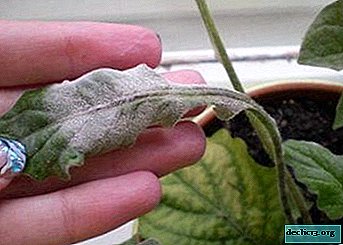 All diseased and fading leaves and flowers are removed from the plant, abundant watering is performed, after which the flower is left for some time.
All diseased and fading leaves and flowers are removed from the plant, abundant watering is performed, after which the flower is left for some time.- In the meantime, you can prepare the container for landing. The pot in which it is planned to plant a flower must be washed. At the bottom a layer of 3-5 cm is placed drainage - expanded clay or pebbles. A small layer of substrate is poured on top.
- When the soil in the old pot is saturated with moisture, the plant is removed and the roots are cleaned of earthen coma. The dried and rotten roots are removed, the remaining ones are treated with crushed coal, paying special attention to the cut points of the affected processes.
- The plant is placed in a new pot and sprinkled with fresh substrate so that the leafy rosette is on the surface. After disembarkation, soft water at room temperature is irrigated. To accelerate recovery in water for irrigation, you can add a stimulant, for example, Epin.
- After transplanting, it is important to observe the irrigation regime and feed the flower with a small amount of mineral fertilizers with iron content.
Useful video
Growing and caring for gerbera at home:
Conclusion
A bright tropical flower can become not only a bright component of a bouquet or flower bed, but also a wonderful decoration of the interior, growing in a pot. For, in order for gerbera to please bloom longer, you must clearly follow the instructions and provide the plant with the necessary care.

 Withering and yellowing of leaves usually a sign of the appearance of a spider mite. This pest appears in rooms with excessively dry air.
Withering and yellowing of leaves usually a sign of the appearance of a spider mite. This pest appears in rooms with excessively dry air. All diseased and fading leaves and flowers are removed from the plant, abundant watering is performed, after which the flower is left for some time.
All diseased and fading leaves and flowers are removed from the plant, abundant watering is performed, after which the flower is left for some time.